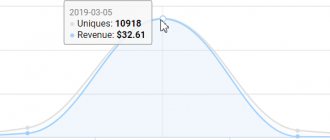How to start an activity
The first thing an entrepreneur needs to determine is what goal he will pursue when raising livestock. It is possible to combine several in one direction. Now there are many directions. For example, cows are bred:
- for the purpose of selling meat
- for milk production
- generalized method
- marketing of juveniles
Farming activities are affected by two types of factors: external and internal. The first include:
- degree of specialization
- security
- availability of productivity
External factors include:
- presence of demand
- economy
- policy
This type of activity is an integral part of the modern world. By abandoning it, you can return to primitive times. Therefore, livestock farming needs to be supported and developed. Only in this case will the entrepreneur succeed.
Before raising livestock, a beginner in the business should think about several questions:
- choice of direction
- business plan preparation
- registration of activities
- seeking help from the state
- purchase of livestock, feed and necessary equipment
Setting up this business correctly involves some difficulties. It is recommended to start in a more familiar direction. It is necessary to adhere to ideas that allow you to quickly recover costs. This will help you reach a new level of activity with greater profits.
Having studied in practice the technology of raising and feeding livestock on a small scale, you can proceed to a large scale. Simply because you need to learn from small things.
Before starting to build a farm, an entrepreneur needs to take care of its legalization. Most often, such enterprises are registered either as KFK (peasant farm) or private household plot (personal subsidiary) or simply as an individual entrepreneur. A cattle breeding farm must be registered using a special code (livestock breeding).
Breeding cattle for dairy and meat nowadays is a branch of livestock farming supported, among other things, by the state. The owners of such an enterprise can even count on small financial support (about 60 thousand rubles). Funds for organizing a barn are given mainly to individual entrepreneurs. You can get money from your local employment office.
Breeding crayfish
Crayfish meat is considered a delicacy, but in wild reservoirs it is becoming scarce, so the industry of artificial breeding of amphibians has gained popularity.
This is a business that you don’t have to spend too much effort on. However, it pays off only after three years - it is believed that this is the time that is enough to form a full-fledged colony of crayfish.
Crayfish farms are rare in many regions
To organize such a profitable business you don’t even need a large area. Typically, the size of an artificial reservoir is no more than 55 square meters. Stones and other objects are placed on the bottom of the pool to serve as a shelter for crayfish. It is important to ensure an optimal microclimate in this container, so water is replaced by no more than 35% at a time.
It is necessary to maintain cleanliness in this artificial reservoir, purchase an oxidizer to saturate the water with air
Crayfish are not demanding in their diet, but they will still have to be fed with special additives for shellfish - this will allow the females to achieve maximum productivity - about 52 fry per season. Crayfish grow to adulthood in 1.5-2 years.
In addition, it must be taken into account that amphibians develop quickly and reproduce only at a water temperature of about 17-23 degrees. Thus, in winter, an artificial reservoir can freeze very much, so it is recommended to purchase a heating system in advance.
The cost of each fry is about 95 rubles, but usually they are sold for no less than 500-600 pieces.
Video – Crayfish breeding and marketing
Creation of a farm: sales of products
The legislator defines personal subsidiary plots (LPH) as a form of activity for the production and processing of agricultural products, which is not related to entrepreneurial activity. A plot of land for personal subsidiary farming cannot exceed 2.5 hectares. Everything above is considered a commercial activity that must be taxed.
Land for personal farming is issued to each owner of a house in rural areas for lifelong use with the right of inheritance and sale. This land can only be used for agricultural purposes, but it is allowed to erect a certain type of building: for living and various auxiliary buildings for agricultural activities.
There are no restrictions on running a private farm. You can engage in livestock farming, poultry farming, and grow vegetables and fruits. Accordingly, if there is an excess, the law allows them to be sold, as already mentioned, without registering an enterprise and paying taxes.
True, in order not to officially pay taxes, two important conditions must be met:
- The plot of land intended for the development of your farm must not exceed the area established by law.
- The business should be serviced only by members of your family, without the involvement of hired workers.
Moreover, you can obtain a document from local governments on the basis of which you can freely draw up a veterinary report on personal household products. Local self-government bodies are required to keep records of all personal subsidiary plots located on the territory entrusted to them. That is, in order to open a business, it is advisable to register with local authorities, where you indicate your type of activity. Based on this data, a certificate with the relevant information is issued.
Thus, organizing a cattle breeding enterprise is quite difficult. This is also a relatively expensive matter. But nowadays it’s even more difficult to find sales markets. The cost of milk and meat given in the article above is retail. If the farm is designed for only 10 animals, perhaps its owner will be able to find direct markets.
When expanding an enterprise with retail sales, certain difficulties may arise. The owner of a large farm will most likely have to sell products in bulk to enterprises of the appropriate specialization. In this case, the price per liter of milk or kilogram of meat will be much lower. When calculating possible profits, this must be taken into account.
What you need to start a business
You need to start any type of activity with calculations. It is clear that each individual case requires clarification. For example, do you have your own plot of land or will it be rented? Are there buildings for keeping animals? Feed will be purchased or prepared independently.
What you need to do to start a business.
Initial investment (based on 10 breeding animals, Russian breed):
- Registration of documents: 28,000 rubles.
- Registration of an individual entrepreneur, obtaining a OGRN certificate (main state registration number)
- Rent or purchase of land for outbuildings and pastures.
- Registration of permits at the Sanitary and Epidemiological Service and Rospotrebnadzor.
- Equipment, separator, milking machines: 52,000 rubles.
- Purchase of breeding animals (10 heads): 6,120,000 rubles.
- Feed for a year: 140,000 rubles.
- If you rent land and outbuildings: 400,000-500,000 rubles.
Total: 740,000-840,000 rubles.
Important. If there is land and outbuildings, then from the amount: 740,000-400,000 = 340,000 rubles.
We do not take into account the salaries of employees, since we are considering the family form of farming.
Possible areas of livestock farming
Most often, cows in our country are bred to produce milk. However, sometimes these animals are also kept for meat. Before starting to build a farm, an entrepreneur, of course, needs to decide on the direction of the business. If there are large enterprises in the vicinity for the production of sausages, stews and other similar products, it may make sense to organize a “meat” farm.
Quite often, entrepreneurs are tormented by the question of livestock farming as a business from scratch, which is more profitable.
Livestock
It is worth noting that the most profitable area is cow breeding.
Entrepreneurs engaged in such business provide the population not only with meat, but also with dairy products.
In addition, young individuals can be sold.
Of course, this direction is labor-intensive. After all, you will have to look for a barn, and for cows it should not be small.
Therefore, for many aspiring entrepreneurs, starting a business with something simpler is possible. Two more equally profitable sectors of livestock farming are:
- pig farming
- poultry breeding
This is due to the fact that the resulting products are among the most in demand. But to achieve a good result, you need to spend a lot of effort and money.
Ostrich breeding
A stable option would be a large farm with various specializations.
But creating such a business from scratch and right away is quite difficult.
And it will require a lot of investment.
Therefore, it is recommended to start small, and when things go uphill you can think bigger.
If we consider the direction of cow breeding separately, then with a number of twenty heads one should not expect big profits.
It is necessary to constantly increase the number of animals, and then you can achieve excellent results. However, if you have no experience in this direction, it is better to start with a small amount. To begin with, it is enough to have five heads of cattle. This will make it possible to understand whether this direction is worth pursuing and whether it was chosen correctly.
We suggest you read: How to shade a polycarbonate greenhouse
Business registration
If you are interested in livestock farming as a business, before you start working, you need to officially register your activity.
To do this, it is enough to register as a private entrepreneur, as well as register with the pension and insurance fund. In addition, you need to prepare project documentation and obtain the appropriate permits from the following authorities:
- SES;
- Fire inspection;
- Labor Inspectorate.
After you have completed all the documents, they should be submitted to the district administration, which will issue a resolution on opening a livestock farm.
How to get land
The use of land for personal farming is regulated by special laws. Their provisions establish that for such purposes, plots of land with an area of no more than 0.5 hectares can be sold or leased by the state. But at the same time, local authorities are allowed to increase this size by a maximum of five times. That is, for personal subsidiary plots you can find land of a maximum of 2.5 hectares, if local authorities consider this possible.
For these purposes, there are two types of land: field and household. The latter are usually located within the boundaries of a populated area and buildings, including residential ones, can be erected on them. Agricultural land can be allocated for field use, but nothing can be built on it. You can open your own business using both some and other lands.
There are several ways to obtain ownership of land for private plots:
- buy;
- to inherit;
- obtain through the allocation of land by the state.
To do this, you need to submit a corresponding application to the local administration, which reviews the application within a month. If the decision is positive, a plot diagram or land warrant is issued along with the resolution. Each document must bear the seal and signature of the head of the administration.
Based on these documents, it is necessary to register the right to real estate. In each region, this is handled by a separate government agency. You must be issued a corresponding certificate no later than a month. If the boundaries of the site have not been established up to this point, they are outlined and a diagram is drawn up.
Revenues and profits
Before you open your farm from scratch, you should perform preliminary financial calculations:
- Rent of land – 500–700 thousand rubles;
- Purchase of livestock – 4–5 million rubles (200 heads);
- Farm maintenance – 500 thousand rubles;
- Purchase of feed – 50 thousand rubles (monthly);
- A veterinarian’s salary is 25–30 thousand rubles;
- Salary to workers – from 15 thousand rubles (monthly for 1 person);
- If you constantly develop your enterprise, it will pay off in literally 2-3 years.
For those who are interested in how to become a farmer from scratch, but do not have large starting capital, here are approximate calculations for maintaining a small herd of 20 bulls:
- Purchase of young animals – 8 thousand rubles 1 head;
- Hay and feed – 10 thousand rubles (for 11 months).
The total costs for 20 animals will be 360 thousand rubles. If you opened a business using credit funds, you will have to pay approximately 30 thousand rubles in interest for 11 months.
With proper care, one bull gains up to 200 kg in 11 months. It can be sold wholesale to resellers for 200 rubles. per 1 kg of live weight. Accordingly, for 20 heads you will receive 720 thousand rubles. If you subtract all expenses, the net profit will be 320 thousand rubles. This is the most profitable business in livestock farming, which brings in decent income.
Farm profitability can be increased by increasing the number of livestock. If you use modern means of small-scale mechanization, you can independently service a herd of 40–60 animals, without the involvement of hired employees.
Choosing a site for a farm
When drawing up a business plan for cattle breeding, this issue should also be given maximum attention. The location for the barn must be chosen correctly. Sheds should, of course, be located at some distance from residential buildings and areas of populated areas. Before you buy a plot or enter into a lease agreement, you should make sure that there is water for a well in this place.
Also, when choosing land, the farmer should take into account the expected livestock. It is believed that per cow there should be:
- perennial grass meadows - 0.5-0.7 ha;
- annual and silage - 0.15-0.25 ha.
Also, agricultural enterprises engaged in the cultivation of root crops and grains should be located near the farm.
So, the net profit from a cattle breeding farm of 10 animals per year can be approximately 500 thousand rubles. However, not every cow can produce 6000 kg of milk, and not every beef bull can gain 800 kg of weight. Therefore, a farmer who wants to make a profit from his enterprise must approach the choice of breed responsibly.
The most productive dairy cow today is, of course, the Holstein. With good care, such cows can produce up to 9 thousand kg of product per year. Also popular among Russian farmers are the following breeds:
- red steppe;
- black-and-white;
- Kholmogory, etc.
All these cows, depending on the conditions of detention, produce 4-6 thousand kg of milk during the lactation period. Of course, it is most profitable to keep Holstein cows on the farm. However, cattle are, unfortunately, quite demanding in terms of care. Therefore, a novice farmer should most likely choose a “simpler” breed. In the future, you can think about buying Holsteins.
Breeding beef cattle will be the most profitable business when choosing bulls of the following breeds:
- Hereford;
- Belgian;
- white Aquitanian.
The productivity of cows will also depend on how good living conditions the owner provides them. Therefore, the construction of sheds should be approached with all responsibility. The size of the farm is determined based on the fact that there should be approximately 20 m3 of free space per animal. The barn plan should include:
- stalls with manure, feed and cross passages;
- feed preparation room;
- rooms for storing equipment, vaccinations, personnel.
A cattle farm for meat production must also be equipped with a mini-slaughterhouse and a refrigeration compartment.
Of course, in the winter, barns must be heated. Therefore, the barn will need to be equipped with a boiler room. Also, the farm design must include a ventilation scheme for the premises.
It will, of course, be problematic for an entrepreneur to build even a small barn for 10 heads on his own. In any case, you will have to hire a construction team. To build a large farm, you may also need specialists who are ready to draw up a barn project for a fee.
It is believed that inexpensive foam blocks are the best material for building a farm. Also today on the market there are ready-made barns made of metal structures. Their advantages are speed of assembly and relatively low cost.
As you can see, building cattle farms is a rather complex and responsible matter. Of course, you can make a profit from such an enterprise. However, you will have to spend a lot of money on organizing a business of such specialization. In any case, of course, you need to have certain skills in keeping this type of farm animal. Such a business is most likely suitable only for a person who is familiar with the basics of keeping cattle first-hand.
Area of activity
Most often, cows in our country are bred to produce milk. However, sometimes these animals are also kept for meat. Before starting to build a farm, an entrepreneur, of course, needs to decide on the direction of the business. If there are large enterprises in the vicinity for the production of sausages, stews and other similar products, it may make sense to organize a “meat” farm. Otherwise, it is better to focus on such a popular product as milk. There are enterprises for its processing in almost every city in Russia.
Business benefits
The main advantage of such a business is that you do not need to register either a legal entity or an individual entrepreneur. But if you still decide to register the latter to conduct commercial activities, you can enjoy the lowest taxation percentage - 6%.
Opening such a business means employing your entire family, who will work for the common good. If a business is organized correctly, it will be 100% profitable. Moreover, such products are in demand among the population. In addition, targeted loans and government subsidies are provided for such businesses.
But in order for a personal subsidiary plot to generate a stable income, you need to think through your business plan well and find clear answers to the basic questions:
- What to build a business on?
- Where to sell the products?
- How to compete with existing manufacturers?
- Is it possible to open your own retail outlet and how to do it?
Market research and planning
Like any other business venture, a livestock farm requires careful planning. It is advisable to involve a specialist who is well versed in this area in developing a business plan for the development of livestock farming. He will conduct thorough market research to determine the financial capabilities of consumers and the level of competition.
In addition, the best livestock business ideas can be borrowed from other entrepreneurs who have managed to achieve success in this area of activity. Do not forget that any mistakes made at the planning stage of your business can lead you to bankruptcy.
Profitability calculation
The costs of organizing a cattle farm are usually significant. Thus, the construction of a small barn (for 7 cows and 3 bulls) will cost approximately 200 thousand rubles. Breeding adult animals cost about 200-300 rubles. per kilogram of mass. The weight of such cows is on average 700 kg.
Breeding cattle for dairy production, just like meat production, also involves costs for animal feed and wages for employees.
We invite you to read: Artichoke heart
Farmers usually purchase about 40-45 thousand rubles worth of feed per cow per year. Thus, for 10 heads you will have to spend 400-450 thousand rubles. Employees will need to pay:
- one milkmaid - at least 15 thousand rubles. per month;
- one handyman 13 thousand;
The total is approximately 28 thousand rubles per month, and 336 thousand rubles per year. That is, the cost of maintaining the farm per year will be 450,000 336,000 = 786 thousand rubles. The farmer will also have to pay taxes (depending on the chosen scheme) and spend money on equipment repairs.
When drawing up a business plan for cattle breeding, you should also calculate your expected income. They will depend on the cost of products supplied to the market. The retail price for a kilogram of milk on the market is approximately 50 rubles. One breeding cow can produce 4000-6000 kg per lactation. Consequently, when selling milk at retail from 7 animals per year, you can get about 1,750,000 rubles.
Based on these figures, it will not be difficult to roughly calculate the profitability of a dairy farm. The cost of keeping beef cows will be about the same. Income is determined taking into account the cost of a kilogram of meat. On the market they ask for an average of 400 rubles for this product. The weight of bull calves at slaughter age is 500-800 kg (live).
Financial calculations
Investments in the project
To implement the business project under consideration, you will need from 100 to 400 thousand rubles, depending on the scale of the farm’s activities, the chosen direction, the number of livestock and species, as well as the volume of products sold. These funds will be spent on registration procedures and construction work in order to restore and modernize the old facility, purchase livestock, as well as consumables and feed.
Current expenses
The monthly expenses of the enterprise will be aimed at replenishing supplies of consumables and feed, maintaining the farm and maintaining the viability of the facility, paying taxes and additional expenses. As practice shows, maintaining livestock farms in cities and regions of the country costs entrepreneurs a variety of amounts.
Sales revenue and expected profit
The income stream depends on the chosen direction of livestock farming and follows from the volumes of meat or dairy products produced and sold. With average production and sales volumes, a novice entrepreneur can count on a total monthly income of at least 100 thousand rubles.
Lending and subsidies
Today this business and its development is supported by various structures. The easiest way is to get targeted loans from banks. Each banking institution develops its own programs to support agricultural activities. They have different durations and purposes. For example, you can find a loan offer for a two-year period for the following needs:
- purchase of building materials for fencing and fencing;
- purchase of planting material, seeds;
- purchase of fuels and lubricants;
- payment for rent of premises and land;
- payment for electricity required for irrigation;
- acquisition of young animals for breeding;
- purchase of plant protection products, mineral fertilizers;
- various seasonal costs.
It is also common to find offers of loans for capital expenses associated with ancillary business for a period of up to five years. For example:
- purchase of livestock;
- acquisition of equipment for processing agricultural products or for livestock breeding;
- construction or renovation of livestock premises;
- purchase of agricultural land, etc.
If you need special equipment for your personal business, you can also include a clause in your business plan about obtaining a loan for it on special terms. Money is issued for:
- purchase of various vehicles for use on the farm weighing no more than 3.5 tons;
- purchase of tractors with power up to 100 hp;
- purchase of tractor trailers and semi-trailers;
- purchase of various equipment with which agricultural products will be processed or used in livestock farming;
- irrigation equipment and so on.
Goat breeding. Advantages
In rural areas, goats are a common thing in households. Many keep them for their own family needs. In terms of quality, goat milk and meat are higher than those of other domestic animals.
What is the value of keeping goats:
- Milk. The content of nutrients and vitamins is 3.5 times higher compared to cow's milk. It is 100% absorbed by the human body. It is the best breast milk substitute and does not cause allergies. Promotes recovery and recovery after illnesses, especially those associated with lung diseases. Binds and removes harmful toxins and radionuclides. Used in cosmetology;
- Wool, down and skin . In fact, a goat is a waste-free animal. It produces valuable fluff and wool. The skins are readily accepted by the harvesters.
- Meat. Goat meat is considered dietary, so its price is twice as high.
In terms of quantitative indicators, a goat is inferior to a cow in terms of milk yield or to pigs and bulls in terms of meat yield. But she needs 6 times less feed than a cow, and the price of milk is 3.5 times higher.
Governmental support
The state has developed special programs for financial support for the formation and development, including, of personal subsidiary plots. It’s not easy to get them; you have to meet a number of conditions and win the tender, but the opportunity exists and it’s worth including in the business plan.
Such support is distributed by region and issued by local authorities. To get a chance at it, you must submit all the necessary documents to it along with a certificate of calculation for receiving subsidies. A complete list of documents and deadlines for their submission are established by local authorities. Based on the submitted documents, this government agency creates a register of applicants for subsidies and holds a competition.
If a business plan is drawn up with the expectation of receiving government subsidies, it must be taken into account that most often they are allocated to the following areas:
- Partial reimbursement of expenses for keeping cows. At the same time, there must be at least three of them in the personal household at the time of filing the application. Funds are issued at the rate of 3 thousand rubles. one head per year.
- Partial reimbursement of expenses for the purchase of agricultural equipment and machinery, which is included in the list of a special Appendix of the rules for issuing subsidies. Please note that the expenditure plan for one subsidiary farm is no more than 150 thousand rubles. in year. Again, it must have at least three cows at the time of application for the subsidy.
If your plan includes applying for this type of government assistance, prepare the following documents:
- a corresponding statement in the prescribed form;
- an extract from the household ledger provided for the management of such a household (the extract must be issued in the same month in which the above application was signed);
- copies of payment documents or checks signed by the recipient of funds, which confirm payment for artificial insemination services for the current year;
- copies of such documents (certified by the owner of the farm):
- transport passports that are registered with the farm;
- payment documents under contracts;
- contracts for the provision of services or performance of work, as well as documents confirming their implementation;
- contracts and other materials that confirm the purchase of materials, equipment or machinery.
The size of subsidies depends only on the budget funds allocated for these purposes within a given region.
Meat farm
Producing meat products is also a very profitable business. Cows belonging to meat breeds have some features, namely: rapid weight gain, taste of meat, annual calving of females.
Meat direction
When choosing a breed, special attention is paid to the early maturity of young animals, namely: the period during which the calf gains the required weight. Different animals have different taste qualities of meat products.
In table No. 2 you can get acquainted with the breeds of animals related to the meat sector.
| Breed name | Animal weight in kg |
| Aberdeen Angus | 1000 |
| Limousinskaya | 1000 |
| Charolais | 1500 |
| Hereford | 1100 |
| Shorthorn | 500-600 (cows) 800-1000 (bulls) |
| Aquitaine light | 1000-1300 (bulls) 700-900 (cows) |
| Belgian Blue | 1000-14000 |
| Galloway | 700-800 |
| Gascony | 1000 |
| Devonian | 800 |
| Kazakh white-headed | 950 |
| Kianskaya | 1400 |
The fastest maturing breeds are:
- Hereford;
- Kazakh white-headed;
- Charolais;
- Simmental.
You can purchase newborn young animals for a minimal cost, but this will create additional difficulties with feeding them. It is best to buy livestock that have switched to a diet of adult animals and grass feed.
Stern
To get a lot of milk or meat, the farm owner will have to develop a suitable diet for the animals. Cows are fed:
- concentrates;
- roughage;
- root vegetables.
Cereals or special compound feeds are usually used as concentrates. Roughage is primarily hay. Juicy - beets, carrots, potatoes. This diet is provided for cattle in winter. In the summer, cows are usually driven out to pasture. The cows are in the meadow all day. The owner of a small farm can negotiate grazing with a shepherd from a nearby village.
In addition to grain, hay, grass, beets and silage, cows should also receive vitamins, as well as microelements necessary for their body. Therefore, the farm owner will need to purchase various kinds of premix additives for them.
Often, barn owners include in the diet of their pets commercially prepared feed according to special recipes. When using them, raising cattle and maintaining them is more expensive. But the productivity of cows also increases. When using mixed feed in the diet, it is not necessary to include additional premixes. They are included in industrial compositions initially.
Livestock breeding
We bought a cow and five piglets. The cow was allowed into the herd so that she could be covered by the bull. The piglets were fed milk, since the cow gave a decent amount, about 20 liters. They were also given ground wheat and barley. The piglets grew well. After 9 months, the cow calved and gave us a bull.
Piglets
The piglets grew up and we raised them. They took two pigs from one sow, and a boar from another, so that they could breed and get healthy offspring.
Drawing up a business plan
Even if you plan to run a personal subsidiary plot, you, one way or another, need to draw up a business plan. First of all, it will help you personally outline the enterprise development strategy, assess possible risks and find ways to solve them. In addition, if you are counting on receiving loans or subsidies from government or private institutions, you may also need a business plan. Often decisions are made based on calculations provided by the owner.
Therefore, a business plan must be drawn up in detail and competently. To do this, it is imperative to take into account and write down the following points:
- What is the planned main activity of your farm?
- What additional activities do you include in your activity plan?
- Where will the main income come from and where will the additional income come from?
- What long-term and short-term goals do you set for yourself?
- What will be the advantages of your products, thanks to which you are going to conquer your niche in the market.
- Main characteristics of the market: dynamics, attractiveness, trends.
- What risks are associated with this activity?
- How do you plan to deal with risks, how can they be mitigated.
- Is property insurance planned and according to what scheme.
We invite you to familiarize yourself with: Outbuildings under one roof
Based on these points, we can distinguish three main components of a business plan, according to which it should be formed.
In this section, you must indicate the name, surname and patronymic of the owner of the farm, the chosen field of activity, work experience in it, and education. It is also necessary to indicate other participants in the project and give their characteristics. Here it is necessary to describe the conditions for growing products, property, etc.
This part is devoted to the characteristics of the land plot, technical base, and other own resources of the owner. It is advisable to give an accurate description of them, the advantages provided by their location, technical characteristics, condition, etc.
Financial plan
The final part of the document will be the financial plan. It should reflect indicators such as:
- Estimated revenues, which are calculated based on estimated production volume and price. According to which it is planned to sell products.
- Estimated expenses, which are calculated from the estimated volumes of purchases of equipment, fertilizers, medicines, feed, electricity costs, etc.
- If there are tax expenses, they must also be taken into account.
- Payment of labor to project participants, even if it is planned to involve only relatives.
- Capital costs – purchase of seeds, livestock, building materials, equipment, etc.
- Sources of financing, their conditions and forms.
Where to begin
The first thing you will need to do is choose a place to work. There should be enough pasture area. The main options for raising cows are former farms, old-style premises. By the way, taking a ready-made option, even taking into account the costs of refurbishment, turns out to be much more profitable than building a new barn.
Constructing a new barn project is not an easy task from a technical point of view. In addition, you will need a number of permissions to implement it.
In premises used for keeping cattle, the temperature should not fall below 12 degrees. Immediately think over a plan for providing animals with feed - in the summer everything is quite simple (provided there are good pastures), in winter a balanced, high-quality diet is required. To make the farm profitable, choose the right breeds - the animals must produce high milk yields. Higher milk yield means shorter payback period for investments made, which should not be forgotten. To increase the profitability of production, you can purchase a dairy mini-workshop for processing dairy products and packaging them.
When breeding cows, it is important to have a high-quality and comfortable barn, because the quality of milk and other products will depend on the conditions of keeping.
Vaccinations and sanitation rules
The benefits from maintaining a farm can be obtained, although not too great, but quite acceptable. However, often beginning farmers are faced with such a serious problem as the death of livestock, and, accordingly, the loss of funds invested in the business.
Some cattle diseases are fatal, others can lead to significant reductions in productivity. Moreover, infections usually spread very quickly in barns. Therefore, maximum attention should be paid to the sanitary condition of cattle premises. The cattle farm must be cleaned daily. In addition, animals need to be vaccinated.
Hiring a veterinarian on a small farm is, of course, unnecessary. In most cases, the owners of such farms, if vaccination is necessary, simply invite specialists from the nearest veterinary clinic for a fee. On a large farm, a doctor of this specialization, of course, must be hired on staff.
The most common diseases in cattle are:
- brucellosis;
- leukemia;
- leptospirosis;
- mad cow disease;
- tuberculosis.
It is worth finding out exactly what diseases cows should be vaccinated against in a particular region and with what frequency in the regional veterinary clinic in the epidemic prevention department.
Farmer reviews
“For a knowledgeable person, raising cows is very profitable, but experience only comes with age. I would advise beginners in this business to carefully choose a breed - by climate, conditions, milk production or meat. Well, of course, it’s good to feed, as they say – milk is on the cow’s tongue” - Elena, 30 years of experience.
“From my varied personal experience, I can say that the dairy business takes more attention and work, but the income is constant. With bulls for meat everything is much simpler, but it takes a long time to get results. You can start slaughtering in just six months” - Sergey, cattle breeder.
“You can get good profitability on the farm only if you engage in independent processing and retail sales. Processing companies set prices too low. A normal farm can produce a ton or two of milk per day” - Nadezhda, livestock specialist.
What you can do right now:
- Watch the video on the topic (provided above)
- Download a detailed cattle farm business plan right now
Boost your passive income Take a free online course from our team in 4 days
What is more profitable for the purpose of selling
Let's take a closer look at how profitable each area of livestock farming is:
- Raising rabbits does not involve large investments and hassle. People who have not previously engaged in livestock farming are recommended to start a business with this type of activity. The main advantage of these animals is their early maturity. Within a month, their weight increases twelvefold. By purchasing five females, you can annually receive two hundred skins and about three hundred kilograms of meat.
- Breeding nutria, if the business is set up correctly, can lead to good profits. After all, one carcass of this animal costs twenty-five conventional units. With proper organization of activities, one family will bring in up to twenty thousand rubles per month. To get good skins, they must be kept for at least nine months.
- Quite often people raise goats. You can get fluff and healthy milk from this animal. For beginners in the field of livestock farming, this is quite a profitable business.
- When breeding turkeys, it is worth considering that they are difficult to maintain. But after ten months such a business pays off. By this time the bird weighs about twenty-five kilograms. The demand for it is very good, so there are no problems with implementation.
- Pigs are classified as precocious livestock. If you provide them with good care, at the age of six months the animal reaches one hundred kilograms of weight. One female can give birth to two offspring per year. Therefore, in addition to meat, you can trade young animals. Little piglets don't come cheap.
- Beef has always been and will be in price. Therefore, raising this animal for sale can easily be called one of the most profitable. With proper nutrition and care, this cattle gains weight of up to three hundred and fifty kilograms in a year and a half.
Due to the fact that the main types of livestock products are always in demand, problems with their sale usually do not arise. Entrepreneurs can sell products on the market or rent them out to small retail outlets.
As for large farms, they enter into deals with retail chains, as well as enterprises that process products. Some farmers additionally set up their own production facilities for processing products, which helps increase profitability from their activities.
Owners of a farm with cattle can make a profit not only from the sale of milk or meat. Many owners of such enterprises are also engaged in such business as cattle breeding. Pedigree calves are quite expensive today. There are always quite a lot of hunters to buy such animals. The price of one purebred calf on the market today is about 12 thousand rubles.
Tags: animal husbandry, personal, start, subsidiary, farm
About the author: admin4ik
« Previous entry
Business organization
Registration of farming activities
Entrepreneurial activities in the field of livestock farming are subject to a mandatory procedure for state business registration. The form of the economic entity is a peasant (farm) enterprise. Thus, activities in the field of livestock farming are carried out by an entrepreneur without forming a legal entity.
According to the current Russian legislation, a peasant (farm) enterprise is an association of citizens related to each other by family relations or property. In addition, the main criterion for uniting such citizens into a peasant (farm) enterprise is the presence of property in common ownership, as well as the implementation of economic activities through personal participation. In connection with the above, it follows that entrepreneurial activity in the form of a peasant (farm) enterprise can be carried out by a businessman individually or by an association of entrepreneurs.
Farm business activities do not require a special license, but a beginning businessman must obtain a wide package of permits and quality certificates for the meat and dairy products produced, confirming their compliance with established state standards.
Farm arrangement
An entrepreneur should take care in advance of choosing a suitable plot of land for setting up a livestock farm. In addition to choosing a region with favorable climatic conditions, attention should be paid to the area of the land plot, which should allow the installation of all the necessary equipment, pens and premises for keeping animals.
When it comes, for example, to breeding cattle breeds, an entrepreneur should first of all decide on the number of livestock, then select a suitable plot of land and install all the necessary utilities. Next, you need to decide on the type of production of finished products. In the case of cattle, you can produce meat or dairy products, or raise animals for both types of production.
The arrangement of the farm will also depend on the entrepreneur’s decision regarding the format of keeping animals - with or without walking. Next, you should calculate the number and area of the required premises for keeping animals, equipped with modern farming equipment.
There is a more economical option for developing a farm - buying out the old facility along with the rights to the land plot and further modernizing the farm. Most often, there are no difficulties in finding a suitable facility in various cities and regions of the country, otherwise the entrepreneur will have to set up a farm from scratch, which requires large initial investments.
Purchase of young animals
Regardless of the chosen format of entrepreneurial activity and the type of product produced, the correct choice of young animals is the basis for the existence of a successful farming enterprise. If a novice entrepreneur does not have sufficient knowledge in his chosen field of activity, it is recommended to consult an experienced livestock breeder for the correct selection and purchase process of young animals.
Purchase of feed
The main consumables and production raw materials are animal feed, the type, range and volumes of which completely depend on the chosen format of livestock farming. The farm's current expenses necessarily include monthly costs for replenishing supplies of necessary feed.
Search for product sales channels
The basis for the profitability indicators of the business project under consideration is a profitable and reliable distribution channel for farm products, regardless of whether we are talking about meat, dairy or another line of production. A new entrepreneur should take care in advance to establish distribution channels for the goods he produces.
You can sell your products directly at agricultural and farm fairs, in shops of the same name, or on the counter of your own farm store. The latter option requires additional capital investments and preliminary preparations, as a result of which it is not very popular among entrepreneurs. Another way is direct cooperation with wholesale and retail outlets that sell farm dairy and meat products among their own range. In this case, the entrepreneur must additionally take care of registering his own trademark, under which farm products will be produced and sold.
Organizational plan
Organizing a business includes several stages of work. The farmer has to choose the breed of cows to raise, set up the farm, purchase young animals and feed. Next you need to learn how to care for calves. If the number of livestock exceeds 10–15, the owner of the farm will need assistants who will clean the premises, distribute feed and other work.
How to choose a breed for fattening?
Raising bulls as a business involves making a profit from the sale of meat. Accordingly, the faster the calves gain weight and the greater their weight at the time of slaughter, the more profitable the event will be. It is important to choose a breed of cow for breeding that is characterized by a rapid increase in muscle mass. These include:
- Hereford. Its representatives have a massive, muscular body. The average weight of an adult bull is 800–1200 kg. The weight gain per day reaches 1200–1500 g. The slaughter yield of meat is 60–70%.
- Kazakh. A bull of this breed weighs 1000–1100 kg. These are massive animals with a height of up to 1.25 m and a body length of 1.55 m. Slaughter yield is 65%.
- Kalmytskaya. Representatives of this breed line have a powerful physique. An adult weighs about 900–1000 kg. The animals are well adapted to being kept outside. They do not lose weight by making long treks.
- Limousinskaya. A cow weighs 550–600 kg, a bull – 1000 kg. The daily weight gain of a calf is 1–1.3 kg. The yield of meat after slaughter is 65–68%.
- Simmentalskaya. Height at the withers is 140 cm, body length is 160 cm. The weight of a newborn bull reaches 35–40 kg, weight gain per day is 900–1000 g. The weight of an adult bull is 1100–1300 kg. Meat yield – 65%.
Finding a suitable site and arranging a barn
To raise bulls in cold regions, you will have to build a pen. Its area is calculated based on the number of heads of livestock. For one adult animal, at least 6 square meters are allocated. m of free space. If a farmer plans to engage in cattle breeding at the same time, he will have to allocate a separate room for the calves that the cows will produce. 2.5–3 square meters are allocated for each calf. m of free space. A room is also needed to store feed.
Cattle are kept with or without the possibility of walking. Each option has its advantages and disadvantages. Bulls that graze on pasture are calmer and healthier, but they gain weight more slowly because some of their energy is spent walking to and from the pasture. Calves that are constantly in a pen are characterized by a rapid rate of weight gain, but are more likely to get sick and become aggressive.
Requirements for the barn:
- it must be located at a distance of at least 30 m from the residential sector, but close to the water source;
- it is better to build a barn from natural materials;
- at the design stage, the possibility of conducting electricity should be provided;
- to control the level of humidity and remove harmful fumes, the room is equipped with a ventilation system;
- the roof is made gable, and an attic is built under it to store hay;
- in cold regions the barn is insulated;
- the presence of windows for daylight penetration;
- stall area for an adult animal is 3 square meters. m.
The barn is equipped with partitions made of metal pipes, drinking bowls and feeders. They can be automatic or simple, group or individual.
Attention! If the population size is less than 10 individuals, the use of automatic food and water supply systems is impractical.
A layer of straw or sawdust is placed on the floor. Experienced farmers recommend building the structure from bricks or blocks, and making the floor sloping and pouring concrete for easy cleaning. It is important to ensure good ventilation in the room, as calves are sensitive to dampness and cold air currents. Under such conditions, the risk of spreading infections increases.
Purchase of young animals
For those who do not yet have experience in cattle breeding, it is advisable to buy calves from large farms, and not from private individuals, so as not to be deceived. On farms specializing in cow breeding, you can get all the information about the animals regarding their origin, breed and vaccination.
Attention! You should not buy young animals under five months of age. Small bulls are more vulnerable to viral diseases, and their digestive system is imperfect. It is better to give preference to six-month-old individuals that have already been fully switched to an adult diet and vaccinated.
Caring for bulls
Success in farming depends on the health of the young animals and the rate of weight gain. It is important to provide good conditions for the bulls. The temperature in the barn should not fall below zero degrees. The room needs to be kept clean - remove manure, wash and disinfect drinking bowls and feeders.
Attention! To prevent deadly diseases, calves are vaccinated in a timely manner. You should periodically invite a veterinarian to examine the animals.
In summer, the young animals are released for walking. Staying in the sun and eating fresh grass has a beneficial effect on the health of calves. Although weight gain slows down with increased physical activity, many farmers prefer free-range housing for cows. Walking improves the taste of meat.
Beginning farmers have questions regarding manure - where to use it. Cow dung is an excellent fertilizer, so it can be sold inexpensively to the owners of agricultural enterprises by agreeing with them on pickup.
Rules for fattening bulls
When fattening cattle, nutrition plays an important role. Calves should receive a concentrated grain feed containing protein. Weight gain occurs faster when corn and potatoes are introduced into the diet. In addition, calves are given:
- vegetables – carrots, fodder beets;
- silage;
- fresh grass and hay.
Clean drinking water at room temperature should be available at all times. Lick salt is placed next to the feeder to replenish the need for minerals. Experienced farmers recommend giving calves bifidobacteria during fattening to avoid digestive problems.
Feeding is done 3 times a day. It is important to properly store hay intended for livestock. It must remain dry, otherwise mold will form in it. After eating spoiled food, calves can become poisoned. Wet grass is also harmful to cows. Once in the stomach, it causes fermentation, which causes bloating - tympany.
Staff
If the number of livestock does not exceed 10 cows, the farmer himself will cope with the work on the farm. If you have a large herd, you will have to hire 2-3 employees. Their duties will include distributing feed to the cows, looking after the animals in the pasture and cleaning the pen. Outside help may also be needed during the slaughter of bulls and cutting up carcasses.
In rural areas, it is not difficult to find people willing to work on a farm - people there are accustomed to hard work and know the specifics of farming. Even for a relatively small fee, it will be possible to attract several men to the staff, because in the villages there are almost no opportunities for earning money.
Search for meat distribution channels
It is worth starting the search for potential meat buyers in advance, so that after the slaughter of the bulls, the meat can be sold in a short time. Contracts for wholesale supplies of beef are concluded with:
- supermarket chains;
- owners of retail outlets in markets;
- factories for the production of semi-finished products;
- restaurants and cafes.
Description of the project for breeding cattle for meat and dairy production
We bring to your attention a feasibility study for the creation of a small enterprise for breeding cattle.
The goal of the project is to breed beef and dairy cattle for subsequent agricultural sales. products to the population in the form of milk and meat.
The production of this type of product is a promising direction, since the meat products market is one of the largest food markets. Meat products are in constant demand both among the population and among organizations when purchasing meat products for further processing.
To increase your chances of creating a profitable business, go to a free marathon about passive income. You can not only learn about different types of income generation, but also begin to put them into practice.
Marketing plan
The main competitors of our farm will be similar producers, personal subsidiary plots, peasant farms and larger agricultural production complexes.
Sales of manufactured products are planned to be carried out in the following areas:
- Sales of products at retail outlets in Dimitrovgrad, in particular at the “meat market”;
- Sales of meat and milk in the locality at the place of registration of the individual entrepreneur;
- Sale of manufactured products in small wholesale to reseller organizations;
- Sale of products in the form of exit trade (from a car) in neighboring settlements.
Sales of products will be carried out at prices:
- Beef retail: 350 rub./kg;
- Beef wholesale: 200 rub./kg;
- Milk at retail: 40 rub./l.;
- Milk wholesale: 30 rub./kg.
It is planned to sell up to 2250 liters per month. milk and 350 kg of meat, or:
- Retail milk – 1000 kg;
- Wholesale milk – 1250 kg;
- Retail meat – 150 kg;
- Meat wholesale – 200 kg.
How much money do you need to start a cattle breeding business?
| No. | Name | Amount, rub. |
| 1 | Construction of an industrial premises 30m*6m (incl.) | 300 000 |
| 1.1 | Expanded clay concrete blocks (3 thousand pieces) | 150 000 |
| 1.2 | Sand (10t) | 5 000 |
| 1.3 | Cement (50 bags) | 15 000 |
| 1.4 | Lumber (5 cubic meters) and roofing | 50 000 |
| 1.5 | Crushed stone (10t) | 12 000 |
| 1.6 | Construction works | 50 000 |
| 2 | Cows, 5 heads | 300 000 |
| 3 | Young cattle (bulls), 12 heads | 270 000 |
| 4 | Feed (barley, oats, hay, straw) for 12 months | 90 000 |
| TOTAL | 1.15 million | |
To carry out the production activities of the enterprise, an individual entrepreneurship was registered.
Dairy breeds
Dairy breeds are distinguished by high milk yields - on average, from one individual you can get from 10 ton of milk. Popular breeds:
- The Ayrshire is unpretentious to growing conditions, has a short body and characteristic lyre-shaped horns. Productivity is high, color is red-motley.
- Jersey - the breed produces the fattest milk, the milk yield is relatively small (up to 3.5 tons per year). When settling, milk quickly divides into fractions. Adult animals are not very large - the weight of females does not exceed 400 kg, and males 700 kg. The meat is not very tasty.
You can learn about the Yaroslavl breed of cows from this article.
The average fat content of milk is 3.5-4%.











